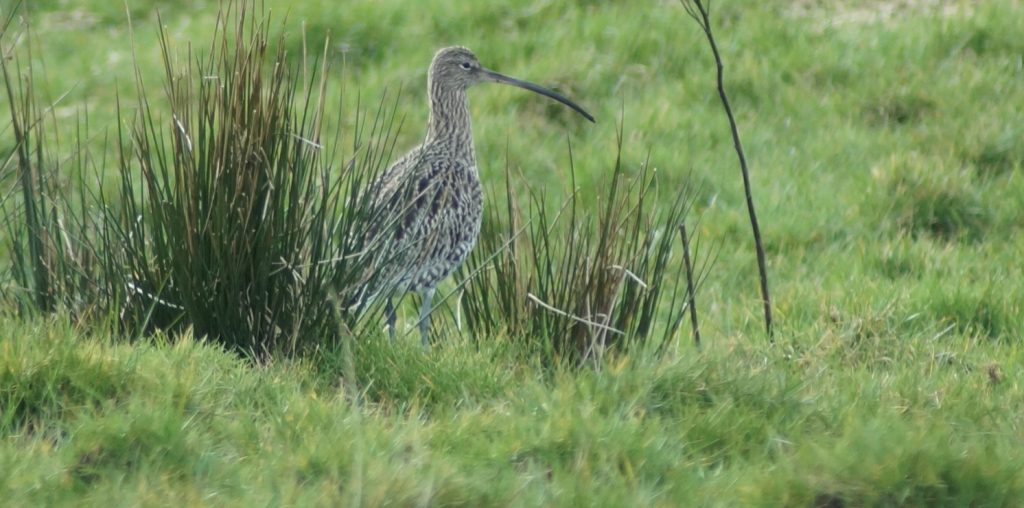The curlew is one of our most popular farmland birds, but their numbers have been declining over the last thirty years. Some of these declines are so dramatic that curlew conservation has become a major biodiversity issue in the UK, and the birds stand on the brink of extinction in many parts of the country. Join us on 21st March as we try to take stock of what has happened and plot a way forward for the species.
Event: 21 March, 7.30pm – attend either online or in person in Balmaclellan Smiddy
Mary Colwell’s 2018 book ‘Curlew Moon’ placed curlews at the centre of a much wider loss of rich, traditional farmland habitats. Following her epic walk across Ireland, Wales and England to explore issues around curlew conservation, the book raises an important alarm for the species at a time of great worry and concern for its future. She is now the Chair of Curlew Action, a charity devoted to curlew conservation, and she also sits on DEFRA’s Curlew Recovery Partnership in England. During this event, Mary will provide a national perspective on curlew and curlew decline, including the challenges and opportunities posed by modern agriculture, forestry and climate change.
Providing a little more Scottish context, writer and conservationist Patrick Laurie will look at the future for curlews in Galloway, where the number of birds has fallen to worryingly low levels since the 1990s.
The event is being delivered in ‘hybrid’ format, allowing attendees to attend either online via zoom or in person, in Balmacllelan Smiddy. To book your free ticket, click here: https://www.eventbrite.co.uk/e/a-future-for-curlews-tickets-513164056507.
Mary Colwell, said:
“Curlews are really important birds in their own right, but they also help us to have much bigger conversations about land use and conservation in this country. As soon as you start to think about curlews, you realise that they’re tied into issues which go far beyond the management of individual fields and valleys. Their annual movements and migrations from Scandinavia to the Atlantic coast remind us that everything is connected, and if we really mean to protect these birds, we need to take a look at wildlife both at home and on an international scale.”
Patrick Laurie added:
“Curlews have been doing really badly in Galloway over the last few decades. They used to be some of our most common and conspicuous farmland birds, but they have now been completely lost from many parts of the county. The remaining curlews are isolated in a scattering of badly damaged habitats, and they will soon be gone if we can’t rise to the challenge of protecting them. It would have been unthinkable twenty or thirty years ago, but it’s suddenly very possible to imagine a future without curlews in Galloway. That’s a sad legacy to pass on to the future.”
There will be time for discussion and questions after the event, which is presented in association with the Working for Waders initiative, a collaborative project involving a range of partners including NatureScot, British Trust for Ornithology and the Scottish Agricultural College. Since 2017, Working for Waders has been determined to halt the decline of five key wader species in Scotland: lapwing, curlew, oystercatcher, redshank and golden plover.
The event is being hosted by the Galloway Glens Scheme, a 5-year project based in the Stewartry region of Dumfries and Galloway. An initiative of Dumfries & Galloway Council’s Environment Team, it is funded by a range of partners including the National Lottery Heritage Fund. The Galloway Glens Scheme aims to connect people to their heritage and to support modern rural communities. www.gallowayglens.org.






